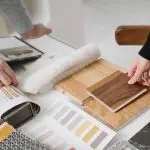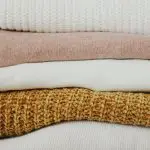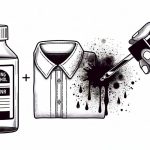Having permanent marker stains on your favorite fabric can feel like an absolute disaster, but fear not! There are 10 effective ways to help you get rid of those stubborn marks and restore your fabric to its former glory.
From common household items like rubbing alcohol and white vinegar to unexpected solutions like toothpaste and hand sanitizer, you have a variety of options at your disposal.
By mastering these techniques, you'll become a pro at tackling permanent marker stains on fabric and never have to worry about ruining your clothes or upholstery again.
So, let's dive into these expert methods and reclaim your fabric from the clutches of permanent marker mishaps!
Key Takeaways
- Rubbing alcohol and hand sanitizer can effectively remove permanent marker stains from fabric.
- Acidic solutions like white vinegar and lemon juice can also dissolve marker pigments without damaging the fabric.
- Toothpaste and baking soda are gentle and eco-friendly alternatives for removing marker stains.
- Non-acetone nail polish remover can be used as an alternative method, but it should be tested on a small area first to avoid damage.
Rubbing Alcohol
To remove permanent marker from fabric using rubbing alcohol, dampen a clean cloth with the alcohol and gently blot the stained area. This method is effective because the alcohol helps to break down the pigments in the marker, making it easier to lift from the fabric. If the stain is particularly stubborn, you can also try spraying the alcohol directly onto the stained area before blotting it with the cloth.
If rubbing alcohol isn't readily available, there are alternative methods for removing permanent marker from fabric. For example, you can try using a mixture of dish soap and hydrogen peroxide, or even non-acetone nail polish remover. These DIY fabric cleaning solutions can be effective in breaking down the marker stains and lifting them from the fabric. However, it's important to test these solutions on a small, inconspicuous area of the fabric first to ensure that they don't cause any damage.
White Vinegar
Using white vinegar is another effective method for removing permanent marker from fabric, as it helps to break down the pigments in the marker, making it easier to lift from the fabric. If rubbing alcohol isn't readily available, you can try using white vinegar as an alternative solution.
Here are some steps for vinegar application in fabric stain removal:
- Prepare the Solution: Mix equal parts of white vinegar and water in a spray bottle.
- Test on a Hidden Area: Before applying the solution to the stained area, test it on a hidden part of the fabric to ensure it doesn't cause any discoloration.
- Apply the Solution: Spray the white vinegar solution directly onto the stained area.
- Blot and Rinse: Use a clean cloth to blot the stained area, transferring the marker onto the cloth. Rinse the fabric thoroughly with cold water.
Vinegar is a versatile and eco-friendly solution for fabric stain removal. Its acidic nature helps to dissolve the marker pigments without causing damage to the fabric. With careful application and gentle blotting, white vinegar can effectively lift the permanent marker stain from your fabric.
Toothpaste
Looking to remove permanent marker stains from fabric?
Well, toothpaste might be just the solution you need. Its gentle abrasive action can help lift the stain off the fabric, while its mild stain removal properties make it a simple and effective option.
Gentle Abrasive Action
Apply a small amount of toothpaste directly onto the stained area and gently rub it in using a soft-bristled toothbrush. This gentle abrasive action can help lift the permanent marker stain from the fabric without causing damage.
Here are some additional tips for using toothpaste to remove permanent marker stains from fabric:
- Use a whitening toothpaste for an extra boost in stain removal.
- After rubbing the toothpaste into the stain, let it sit for 5-10 minutes before rinsing.
- Repeat the process if necessary, but avoid excessive scrubbing to prevent fabric damage.
- Wash the fabric in cold water after treating the stain to remove any remaining toothpaste residue.
Mild Stain Removal
To continue the discussion from the previous subtopic, gently rub a small amount of toothpaste directly onto the stained fabric using a soft-bristled toothbrush, allowing the gentle abrasive action to lift the permanent marker stain without causing damage. When using toothpaste for mild stain removal, it's essential to consider pre-treatment techniques and fabric compatibility. Different fabric types may react differently to the toothpaste, so it's crucial to test a small, inconspicuous area first. The timeframe for stain removal with toothpaste can vary, but it's best to act promptly. Leaving toothpaste on the fabric for an extended period may lead to potential fabric damage. Here's a quick overview of the toothpaste method for mild stain removal:
| Pros | Cons |
|---|---|
| Gentle abrasive action | Potential fabric damage |
| Can be effective for light stains | Varying compatibility with different fabrics |
This method should be approached with caution, ensuring it is suitable for the specific fabric and stain type.
Simple and Effective
You can easily tackle permanent marker stains on fabric by rubbing a small amount of toothpaste directly onto the affected area with a soft-bristled toothbrush. Toothpaste can be an effective solution for removing permanent marker stains from fabric. Here are some reasons why:
- Toothpaste contains mild abrasives that can help lift the stain without damaging the fabric.
- The whitening agents in toothpaste can assist in breaking down the marker pigments.
- Toothpaste is readily available in most households, making it a convenient option for stain removal.
- It's a cost-effective alternative to specialized stain removers, saving you money.
After removing the stain, consider applying a fabric protection spray to prevent future stains. This proactive measure can help keep your fabric looking clean and pristine for longer.
Hand Sanitizer
When removing permanent marker from fabric, consider using hand sanitizer, as it can effectively break down the ink and lift it from the fibers. Hand sanitizer contains alcohol, which helps to dissolve the pigments in the permanent marker ink, making it easier to remove from the fabric. Here are some benefits of using hand sanitizer as a fabric stain remover:
| Benefits | Hand Sanitizer as a Fabric Stain Remover |
|---|---|
| Contains alcohol | Effectively breaks down ink stains |
| Portable and convenient | Can be used on the go |
| Multipurpose | Useful for various types of stains |
| Quick-drying formula | Minimizes the risk of spreading the stain |
| Easy to apply | Simply apply and blot with a clean cloth |
To use hand sanitizer for removing permanent marker stains, apply a small amount to the stained area and gently rub it in. Allow it to sit for a few minutes, then blot the area with a clean cloth. Repeat the process until the stain is lifted. Finally, launder the fabric as usual. Hand sanitizer can be a handy tool for effectively tackling permanent marker stains on fabric.
Hairspray
If you've ever wondered if hairspray can be used to remove permanent marker from fabric, you're in the right place.
Hairspray contains alcohol, which can act as a solvent to break down the permanent marker ink.
When applying hairspray to fabric, be sure to test it on a small, inconspicuous area first to ensure it doesn't cause any damage.
Hairspray as Solvent
Using a small amount of hairspray, gently spray the affected fabric to begin dissolving the permanent marker. When using hairspray as a solvent for removing permanent marker from fabric, it's important to follow some key steps to ensure effective and safe removal. Here's what you need to do:
- Apply the hairspray directly onto the stained area of the fabric.
- Allow the hairspray to sit for a few minutes to penetrate the marker stain.
- Gently blot the treated area with a clean cloth to lift the marker from the fabric.
- Repeat the process as needed until the marker stain is completely removed.
Application on Fabric
To effectively apply hairspray as a solvent for removing permanent marker from fabric, gently spray the affected area and allow it to sit for a few minutes before blotting with a clean cloth. This method can help lift the permanent marker stain from the fabric. However, it is important to note that this technique may not be suitable for all fabric types, and a patch test in an inconspicuous area is recommended. Here's a table that outlines some fabric protection tips and permanent marker alternatives:
| Fabric Protection Tips | Permanent Marker Alternatives |
|---|---|
| Use fabric protectant sprays to create a barrier against stains and spills | Consider using washable fabric markers for temporary designs |
| Avoid using harsh chemicals on delicate fabrics | Opt for fabric-safe markers that can be easily removed with water |
| Follow proper laundering instructions to maintain fabric integrity | Explore heat transfer designs for long-lasting, non-permanent decoration |
Effectiveness on Permanent Marker
When dealing with the effectiveness of hairspray as a solvent for removing permanent marker from fabric, you can assess its impact on different fabric types and its potential for successful stain removal.
Hairspray's effectiveness in removing permanent marker from fabric depends on various factors, such as the type of fabric, the type of hairspray, and the age of the stain. Here are some considerations to keep in mind:
- Hairspray's ability to break down the marker's pigments
- The potential for hairspray to lift the stain from the fabric fibers
- The impact of hairspray on delicate fabrics
- The necessity of testing hairspray on a small, inconspicuous area first
Understanding the potential of hairspray as a solution for permanent marker removal from fabric can help you make informed decisions when attempting to tackle stubborn stains.
Baking Soda
Try sprinkling baking soda directly onto the stained fabric and rubbing it gently with a damp cloth to help lift the permanent marker. Baking soda is a versatile household item that can be used for various cleaning purposes, including removing permanent marker stains from fabric. When combined with water, baking soda can create a mild abrasive paste that helps to break down the marker pigments. The mild abrasive action, along with the chemical reactions between baking soda and the marker, can aid in lifting the stain from the fabric fibers.
One of the benefits of using baking soda for stain removal is its gentle nature, which can contribute to fabric preservation. Unlike harsh chemical cleaners, baking soda is less likely to cause damage or discoloration to the fabric. Additionally, baking soda is an eco-friendly and cost-effective solution for removing stains, making it a popular choice for those looking for natural cleaning alternatives.
After applying the baking soda and water mixture, allow it to sit on the stained area for a few minutes before gently scrubbing the fabric. Once the stain appears to have lifted, launder the fabric as usual to remove any remaining residue.
Lemon Juice
You can apply lemon juice directly to the permanent marker stain on the fabric to help break down the pigments. The natural acidity of lemon juice makes it an effective stain remover. Here are some reasons why lemon juice is a great option for removing permanent marker stains:
- Citrus Solvents: Lemon juice contains natural citrus solvents that can help dissolve and lift the pigments of the permanent marker from the fabric fibers.
- Natural Stain Removers: Lemon juice is a natural alternative to harsh chemical stain removers, making it a gentle yet potent option for treating fabric stains.
- Acidic Properties: The acidic nature of lemon juice can aid in breaking down the chemical bonds of the permanent marker, facilitating its removal from the fabric.
- Fresh Scent: In addition to its stain-removing properties, lemon juice leaves behind a fresh, citrus scent, adding a pleasant aroma to the treated fabric.
When using lemon juice as a stain remover, it's essential to test it on a small, inconspicuous area of the fabric first to ensure that it doesn't cause any discoloration. Additionally, after applying lemon juice, launder the fabric as usual to thoroughly remove the stain and lemon juice residue.
Dish Soap
Applying a small amount of dish soap to the permanent marker stain can help break down the pigments and facilitate their removal from the fabric fibers. Dish soap is effective in loosening the bond between the permanent marker pigments and the fabric.
To start, dampen the stained area with water, then apply a small amount of dish soap directly onto the stain. Gently massage the dish soap into the fabric, working it into the fibers. Allow the dish soap to sit on the stain for a few minutes to penetrate and break down the marker pigments.
After letting it sit, rinse the fabric thoroughly with cold water. Check the stained area, and if the marker is still visible, repeat the process until the stain lightens. Once the stain is no longer visible, launder the fabric as usual.
Dish soap is particularly effective in breaking down and removing oil-based permanent marker stains from fabric, making it a valuable household item for addressing such stubborn stains.
Hydrogen Peroxide
One effective method for removing permanent marker from fabric is by using hydrogen peroxide. This powerful solution can effectively lift the stain without damaging the fabric. Here's how to use hydrogen peroxide to remove permanent marker from fabric:
- Test for Fabric Compatibility: Before applying hydrogen peroxide, test it on a small, inconspicuous area of the fabric to ensure it doesn't cause any damage.
- Apply Hydrogen Peroxide: Pour a small amount of hydrogen peroxide directly onto the stained area. Gently blot the fabric with a clean cloth to help the hydrogen peroxide penetrate the stain.
- Allow It to Sit: Let the hydrogen peroxide sit on the stain for a few minutes to allow it to work its magic.
- Rinse and Launder: After the hydrogen peroxide has had time to work, rinse the fabric thoroughly with water and then launder as usual.
Hydrogen peroxide is effective in removing permanent marker stains from fabric, but it's important to always test for fabric compatibility and follow safety precautions when using it.
Acetone
If you're dealing with stubborn permanent marker stains on fabric, acetone can be a powerful solution. However, it's essential to take safety precautions when using acetone, as it's a strong solvent.
Understanding how to effectively use acetone on fabric stains can help you achieve the best results without damaging the material.
Acetone for Fabric Stains
Have you ever tried using acetone to remove fabric stains caused by permanent marker?
When using acetone as a solvent to remove fabric stains, it's important to do so safely and effectively. Here's how to use acetone for fabric stains:
- Apply a small amount of acetone to a clean cloth
- Gently dab the stained area with the cloth
- Continue dabbing until the stain starts to lift
- Wash the fabric as usual to remove any remaining acetone residue
Remember to test acetone on a small, inconspicuous area of the fabric first to ensure it doesn't cause any damage or discoloration.
Always work in a well-ventilated area and avoid using acetone on delicate fabrics.
With these precautions, acetone can be a powerful tool for removing stubborn fabric stains.
Acetone Safety Precautions
When using acetone as a solvent to remove fabric stains, it's essential to prioritize safety by following proper precautions.
Acetone ventilation is crucial when working with this chemical. Always ensure that you're working in a well-ventilated area to prevent inhalation of acetone fumes, which can cause dizziness and headaches.
Additionally, it's vital to prioritize acetone skin protection. When handling acetone, wear protective gloves to prevent skin contact and potential irritation or dryness. In case of skin contact, wash the affected area thoroughly with soap and water.
By prioritizing acetone ventilation and skin protection, you can safely and effectively use acetone as a solvent for removing fabric stains.
Always remember to read and follow the safety instructions provided on the acetone product label for specific guidance.
Using Acetone Effectively
To effectively use acetone for removing fabric stains, ensure that you're working in a well-ventilated area and wearing protective gloves to prevent skin contact. When using acetone, follow these steps for optimal results:
- Dab acetone onto a clean cloth, and gently blot the stained area to avoid spreading the marker.
- Test the acetone on a small, inconspicuous area of the fabric to ensure it doesn't cause damage or discoloration.
- Use a gentle, circular motion to work the acetone into the stain, gradually lifting the marker from the fabric fibers.
- Once the stain is removed, wash the fabric according to the care instructions to remove any remaining acetone residue and restore the fabric's texture.
Frequently Asked Questions
Can I Use Regular Alcohol Instead of Rubbing Alcohol to Remove Permanent Marker From Fabric?
You can use regular alcohol instead of rubbing alcohol to remove permanent marker from fabric. However, be cautious as it may not be as effective and could potentially damage the fabric. Consider alternative methods for fabric safety.
Is It Safe to Use Toothpaste on Delicate Fabrics Like Silk or Wool?
Yes, it's safe to use toothpaste on delicate fabrics like silk or wool, but it's best to test on a small, inconspicuous area first. Toothpaste alternatives like mild detergent can also be used for fabric care.
Will Hand Sanitizer Leave a Sticky Residue on the Fabric After Removing the Permanent Marker?
Using hand sanitizer to remove permanent marker may leave a sticky residue on fabric. It's best to test on a small area first. If concerned about residue or potential fabric damage, consider alternative methods like rubbing alcohol or white vinegar.
Can I Use Hydrogen Peroxide on Colored or Patterned Fabrics Without Causing Fading or Discoloration?
When using hydrogen peroxide on colored or patterned fabrics, it's crucial to check for fabric compatibility and colorfastness. Test in an inconspicuous area first to ensure it won't cause fading or discoloration.
Is Acetone Safe to Use on All Types of Fabric, or Will It Cause Damage or Discoloration?
Acetone is not safe on all fabric types and may cause damage or discoloration. Consider using alcohol as a substitution for marker removal. Always spot test in an inconspicuous area before applying any substance to fabric.
- Recycling Nonwoven Fabrics: Is It Possible? - July 11, 2025
- Recycling Nonwoven Fabrics: Is It Possible? - July 11, 2025
- Recycling Nonwoven Fabrics: Is It Possible? - July 11, 2025







